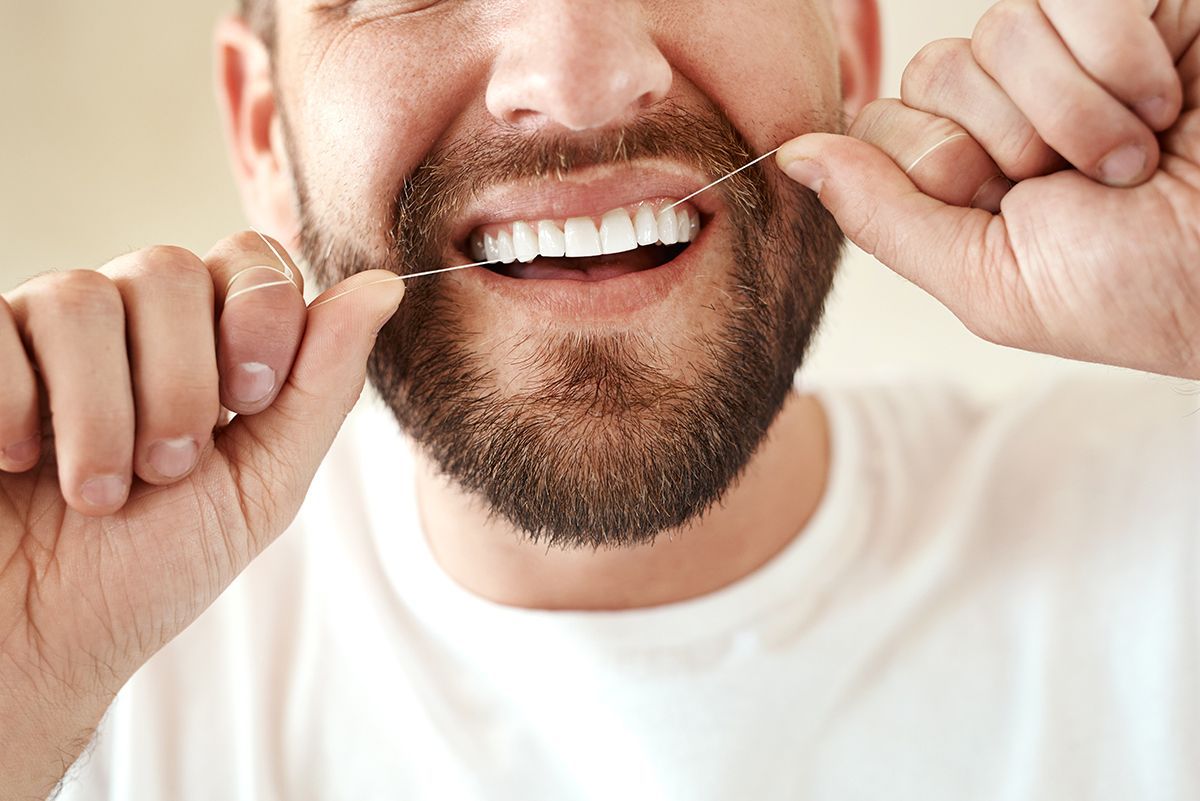How Does Invisalign Work?
In the world of orthodontics, Invisalign has become a popular and revolutionary alternative to traditional braces. It's known for its effectiveness, comfort, and discreet appearance. If you're considering Invisalign treatment, or if you're simply curious about how it works, you've come to the right place. At Oadby Dental Clinic, we're well equipped to answer all your questions and ease any concerns you may have before starting treatment.
What is Invisalign?
Invisalign is a modern orthodontic treatment that helps straighten your teeth without the use of traditional metal braces. It relies on a series of custom-made clear aligners to gradually shift your teeth into their desired positions. The aligners are nearly invisible, making them a popular choice for people who want a more discreet way to achieve a straighter smile.
What Is Invisalign Made Of?
Invisalign aligners are made of a specialised thermoplastic material that is clear, smooth, and comfortable. This material is BPA-free and has been developed to be both effective in shifting teeth and nearly invisible when worn.
How Does Invisalign Work?
Invisalign works through a meticulously planned process that involves the following key steps:
1. Consultation and Treatment Plan
Your journey with Invisalign begins with a consultation with ourselves. We will examine your teeth, discuss your goals, and determine if Invisalign is the right option for you. If it is, we will create a personalised treatment plan.
2. Digital Impressions
Traditional braces involve messy moulds and impressions. Invisalign, on the other hand, uses advanced 3D imaging technology to create a digital model of your teeth. This digital impression serves as the basis for your aligners.
3. Aligner Fabrication
Based on the digital impression, a series of custom aligners are manufactured. These aligners are typically made of a thermoplastic material that is BPA-free and designed to be comfortable while applying the right amount of pressure to move your teeth.
4. Sequential Treatment
You'll receive a series of aligners, each slightly different from the last. You wear each set of aligners for about two weeks, and they gradually shift your teeth into the desired positions. Over time, your teeth will move closer to the final goal set in your treatment plan.
5. Regular Check-ups
During your Invisalign treatment, you'll need to have periodic check-ups with us to ensure everything is progressing as planned. We may provide you with additional aligners during these appointments.
6. Completion
Once you've gone through all the aligners in your series, you'll have achieved the desired alignment of your teeth. Congratulations, you've completed your Invisalign treatment!
How Does Invisalign Move Teeth?
Invisalign moves teeth by applying controlled and consistent pressure to specific areas of your teeth. Each set of aligners is designed to shift your teeth slightly. As you progress through the series, your teeth gradually move into their desired positions.
The aligners work on multiple aspects, including:
- Rotating teeth
- Shifting teeth horizontally
- Moving teeth vertically
- Tilting teeth
Invisalign's software allows us to customise the treatment plan, ensuring precise tooth movements over time.
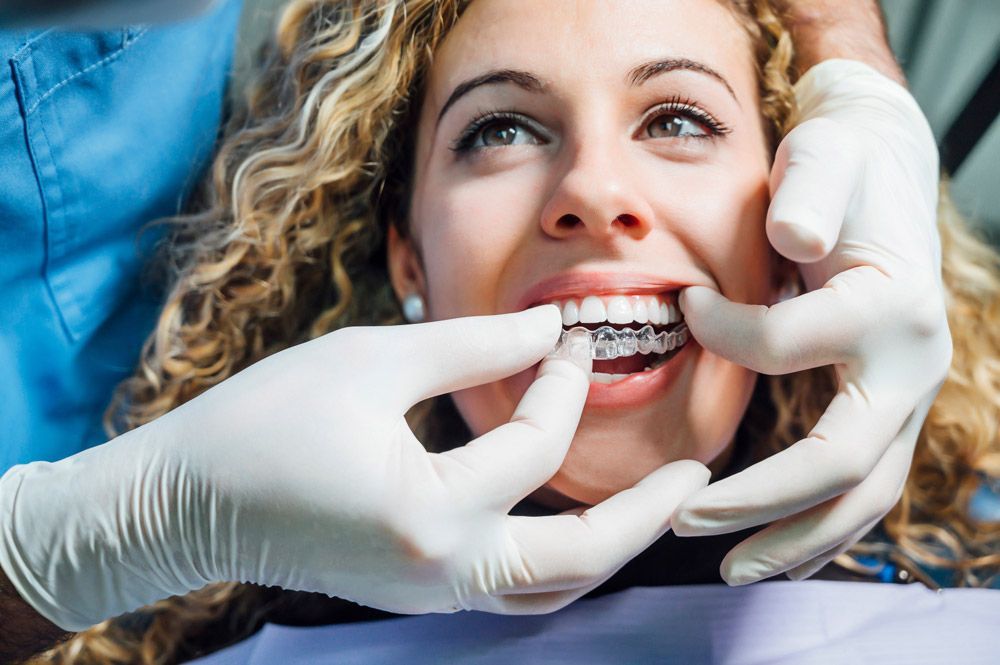
How Long Does Invisalign Take?
The duration of an Invisalign treatment can vary from person to person, depending on the complexity of the orthodontic issues being addressed. In general, Invisalign treatment can take anywhere from 6 months to 2 years to complete. We will give you a more precise estimate based on your specific needs at your appointment.
What Do Invisalign Retainers Look Like?
After completing your Invisalign treatment, you will need to wear retainers to maintain your new smile. In most cases, Invisalign retainers are similar in appearance to the final aligners in your treatment series, but they are often made from a slightly thicker and more durable material. The goal is to preserve the alignment achieved during your treatment.
How Long to Wear a Retainer After Invisalign?
We will provide guidance on how often and for how long to wear your retainers. Typically, you'll need to wear them full-time for a few months, and then gradually transition to nighttime-only wear.
How Much Does Invisalign Cost?
The cost of Invisalign treatment also varies depending on factors such as the complexity of your case. We will provide a customised quote for your specific situation.
Which Is Better: Invisalign or Braces?
The choice between Invisalign and braces depends on your individual needs and preferences. Here are some factors to consider:
| Invisalign | Braces |
|---|---|
| Nearly invisible appearance | Effective for complex cases |
| Removable for eating and cleaning | Non-removable, ensuring constant treatment |
| Requires discipline to wear consistently | May cause some discomfort initially |
| Minimal dietary restrictions | Dietary restrictions |
| Effective for many orthodontic issues | May be more affordable for some individuals |
Invisalign or Braces: Which Is Faster?
The speed of treatment with Invisalign or braces depends on the individual case. In some instances, Invisalign can achieve results faster than traditional braces, especially for minor or moderate orthodontic issues. However, braces can be more effective for complex cases. Ultimately, the timeline for achieving your desired results should be discussed with us during your appointment.
Can You Drink with Invisalign?
Yes, you can drink water with Invisalign aligners in, but it's recommended to remove them when consuming other beverages, especially those that may stain or sugar-sweetened drinks. Remember to clean your teeth and aligners before putting them back in your mouth.
Can You Eat with Invisalign?
It's not advisable to eat while wearing Invisalign aligners. Food particles can get trapped between your aligners and your teeth, which can lead to hygiene issues and dental problems. To enjoy a meal, remove your aligners, and be sure to clean your teeth and aligners before reinserting them.
How to Clean Invisalign
Keeping your Invisalign aligners clean is crucial for maintaining good oral hygiene and preventing the buildup of bacteria.
Here's how to clean your Invisalign aligners effectively:
Rinse
Rinse your aligners with lukewarm water every time you remove them. This helps remove saliva and food particles.
Brush Gently
Use a soft-bristle toothbrush to clean your aligners. Avoid using toothpaste, as it can be abrasive. Instead, use a clear, unscented, and gentle antibacterial soap. Brush the aligners inside and out, then rinse thoroughly.
Soak
You can use special Invisalign cleaning crystals or a denture cleaner to soak your aligners. Follow the manufacturer's instructions for the best results.
Avoid Heat
Never expose your aligners to hot water, as it can deform them. Similarly, do not leave them in direct sunlight.
Store Properly
When you're not wearing your aligners, store them in their provided case to protect them from dirt and damage.
Maintain Oral Hygiene
Don't forget to maintain proper oral hygiene by brushing and flossing your teeth before reinserting your aligners.
How to Take Out Invisalign
Removing Invisalign aligners is a straightforward process, here are some tips:
Start at the Back
Use your fingers to gently lift the aligners off one side of your back molars. This will break the aligner's grip on your teeth.
Slide Off
Once one side is free, gently slide the aligner off the other side of your teeth.
Be Gentle
Avoid using excessive force, as this can damage the aligners.
Use the Right Tools
If you find it challenging to remove your aligners with your fingers, consider using an aligner removal tool.
Clean Before Reinserting
After eating or drinking anything other than water, be sure to clean your teeth and aligners before putting them back in.
Can You Smoke with Invisalign?
Smoking is discouraged while wearing Invisalign aligners. Smoke particles can discolour the aligners, making them more noticeable. Additionally, smoking can contribute to dental problems, so it's a good time to consider quitting for your oral health and overall well-being.
Can You Kiss with Invisalign?
Yes, you can kiss with Invisalign. Ensure your aligners are firmly in place before engaging in a kiss to avoid any discomfort or awkward moments. You may also want to communicate with your partner about your Invisalign treatment to prevent any surprises.
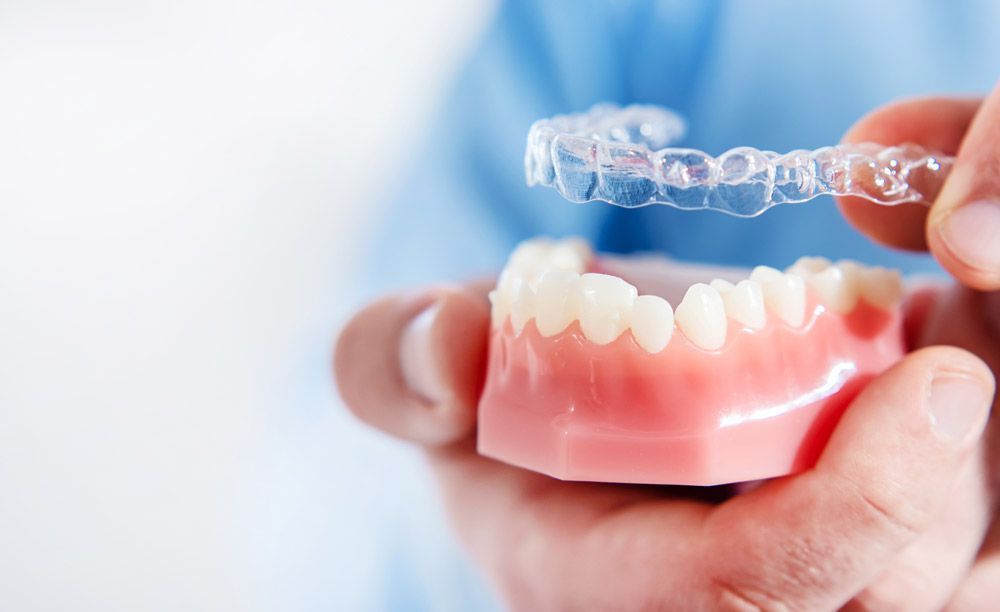
Invisalign (known as ‘invisible braces’) is a remarkable orthodontic solution that has revolutionised the way people approach teeth straightening. Whether you have minor misalignments or more complex orthodontic issues, Invisalign can provide you with a comfortable, discreet, and effective path to a straighter smile. Remember to consult with Oadby Dental Clinic to determine if Invisalign is the right option for you and to get a customised treatment plan that addresses your specific needs and goals. Your beautiful, straight smile is just a series of aligners away!
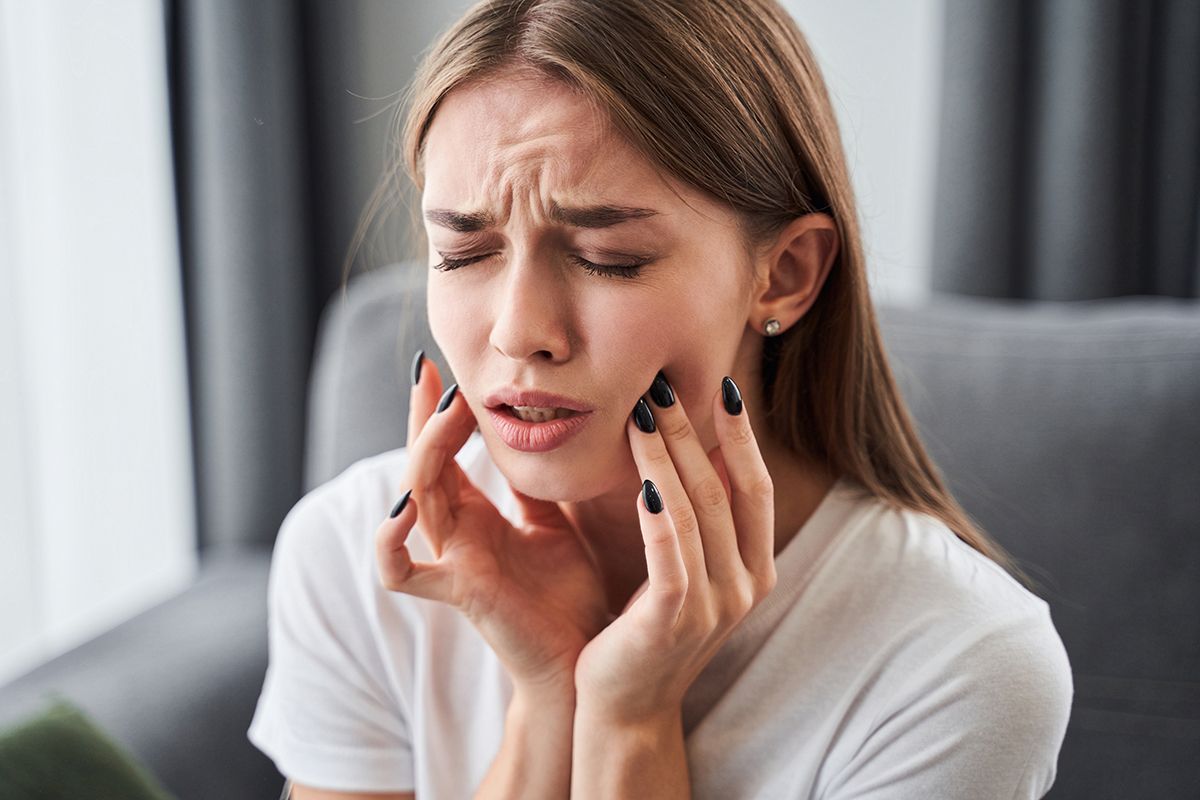
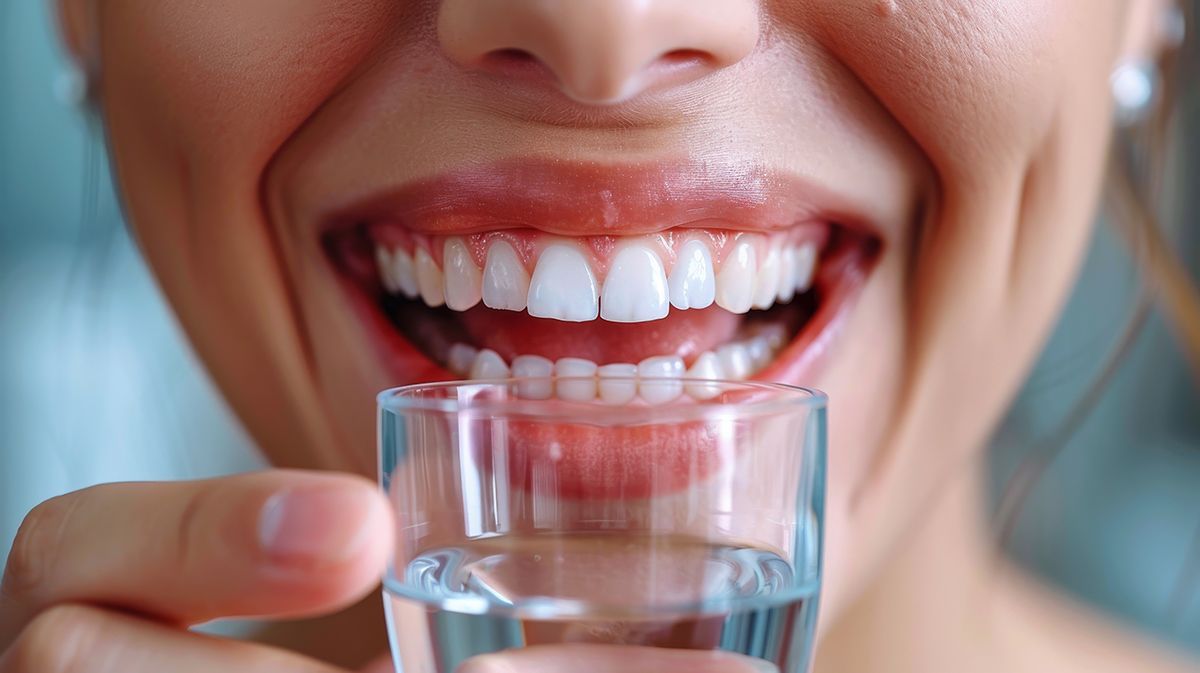
We always try to see our patients on time. However, there are times when you may be kept waiting. There is normally a good reason for it, and we do appreciate your patience. If you have to cancel an appointment, please give us as much notice as possible, and preferably no less than 24 hours or else charges may apply. if the appointment is a longer appointment we will require at least 48 hours notice for cancellations. We make a charge for private appointments broken without notice/insufficient notice. For NHS appointments, we will no longer offer any future appointments if you miss 2 appointments in any one rolling year, or cancel without appropriate notice.
For all new patient appointments a £50.00 deposit will be taken.

